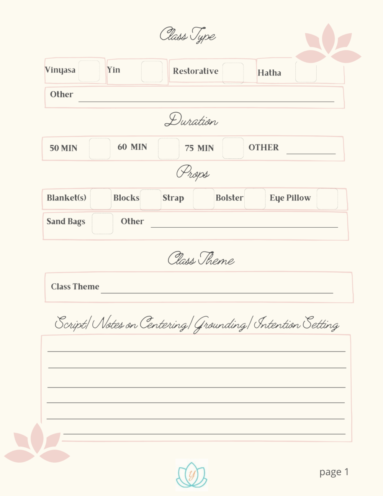As a yoga teacher, you passionately give so much of yourself to others. It’s easy to overlook the importance of taking time to relax, re-charge, and replenish your own energy.
Your own practice may even suffer since most of your time on the mat is spent with others in mind prepping for the classes you will teach.
The answer to self-care and teaching longevity, may simply be to fill your own cup first, in order to effectively fill others.
“You can’t pour from an empty cup.” ~ Unknown
Here are some simple tips to help nourish your yoga teacher self. At the end of the list is a yummy, guided meditation made especially for you!
Eat Well
Of course, we all KNOW the importance of eating clean food but as life gets busy, mindful eating can easily go by the wayside. According to the Mayo Clinic “The fundamentals of eating clean encourage you to consume more whole foods — such as fruits, vegetables, lean proteins, whole grains and healthy fats — and limit highly processed snack foods, sweets and other packaged foods.” Making a few minor adjustments to your diet can have an immediate impact on how you feel.
Get Plenty of Sleep
If you’re anything like me, you need a good eight hours of sleep. To get the required amount of sleep, it’s a good idea to put your phone and all electronics away early. This means no last-minute Instagram checks, no looking at e-mail one last time, your student count for the next morning’s class – or whatever it is that the dopamine in your brain is trying to get you to do before bedtime. Not to mention, time spent staring at the blue light from your screen is said to contribute to insomnia. Practicing Restorative yoga before bedtime will also help prepare your mind and body for sleep. Try a restorative Balasana (child’s pose), restorative Setu Bandha Sarvangasana (bridge pose), or Viparita Karani (legs up the wall).
Spend Time in Nature
Although indoor yoga can be a great workout, outdoor yoga, walking, biking, and hiking in nature particularly, are all beneficial forms of exercise to incorporate into your overall fitness plan. According to an article by the APA (American Psychological Association), “spending time in nature can improve [your] mental health and sharpen cognition.” Studies show that being outdoors lowers the stress hormone, Cortisol, and provides many other health benefits. Just soaking up some vitamin D can improve mood and boost your immune system.
Don’t Neglect Your Own Practice Time
Spending time on your mat is more important now than ever. But, the time spent should not be only for class planning, but also for yourself. Consider signing-up for someone else’s class and participating as a student. Remember back to the reasons you started practicing yoga and how it made you feel. Take a new look at it from a beginner’s eye. Fall in love again.
“In the beginner’s eye there are many possibilities, but in the expert’s there are few.” ~ Shunryu Suzuki
Practice Meditation, Restorative, or Yin Yoga
Do you have an established meditation practice? If nothing else, take at least 5-15 minutes out of each day for a meditation practice. This can be as simple as finding a comfortable seated position, closing your eyes, and following the path of your breath. Remind yourself to take slow, deep diaphragmatic breaths, stimulating the Vagus nerve (central nerve that communicates with our nervous system) and activating the Parasympathetic Nervous System. There are many other ways to engage in a meditation practice. We now have guided meditations on YouTube and apps such as Insight Timer, and Headspace (now on Netflix). You can start by listening to the guided meditation I’ve recorded just for yoga teachers below.
Restorative and Yin yoga are thought to be more meditative styles of yoga. In these practices, you are allowed the time and space to deeply relax. Here you are allowing your body to restore balance in your digestive and immune systems, resetting cortisol levels, and slowing respiration, heart rate, and lowering blood pressure. Restorative types of yoga can reduce stress-related illness, boost mood, and relieve symptoms of anxiety and depression.
Take Social Media Breaks
We talked about a cut-off time for social media before bed but taking planned social media breaks is a great idea as well. Check your phone’s screen time meter and you’ll see why this is important. Most of us spend upwards of five hours a day on our phones. I’m not saying all of this time is spent on social media but a good portion of it probably is. Planned disconnects are a great time to plan to spend more time outside, doing some of those activities we talked about above, or spend time with friends.
Spend Time with Yogi Friends
There is no doubt you developed strong bonds with other trainees and a support system during your teacher training. Are there a few in particular who you keep in touch with? I have one I call my BYF (best yoga friend). We attend other trainings and events together, and constantly bounce ideas off each other. Our relationship is extremely valuable to me and I don’t know what I would have done without her! Don’t underestimate the value of having a support system like this. Make time just to chat with your BYFs and other yoga teachers in your community. It’s the reason I began this blog – so new teachers can stay connected and feel supported. It’s so nice to know we are not alone in our yoga teacher journey.
Use Modifications and Props to Protect Overuse
How many times do you practice per week? Are you feeling the effects on your body? It didn’t take long for me to feel some sensitivity in my knees and shoulders. I took a workshop on protecting your knees and it was time well spent. In order to practice for longevity so that you can enjoy yoga for many, many years to come, take care of your joints now. Even if you don’t experience any symptoms now, plan for the future. Place a blanket under your knees, use blocks in your practice now and then, skip a vinyasa when you’re on number five or six. It’s okay to take breaks and skip a day or two. Lead by example and show your students how to protect themselves, while protecting yourself.
Teach What You Love
Have you ever agreed to teach a style of class that you don’t particularly like teaching? Is there one type of yoga you enjoy the most? It’s natural when you’re starting out to accept teaching any class just to get your foot in the door of a studio, but this will wear on you over time. My advice is to try it, because you might end up liking it – but if you find you are not happy, move on and teach what truly makes you feel satisfied. Teaching what you love is a rewarding experience and you deserve to be happy and feel fulfilled. Be true to yourself in your teaching (Satya – Truthfulness; 2nd Yama).
Do Your Work and Let the Universe Take Care of the Rest
As you are aware, yoga is more than Asana (physical postures). It’s important to live yoga in your daily life. Read my recent blog posts on teaching the Yamas and Niyamas, (the 1st and 2nd limbs of yoga in Patanjali’s 8-limbed path) and to learn more about these guidelines to live a more purposeful life. Follow the self-care steps above to avoid teacher burnout and at the end of the day, allow the Universe to take care of the rest.
As promised here is a special guided meditation, just for you! See the recorded version below.
Self-Care Guided Meditation for Yoga Teachers
Prepare your space by dimming the lights, lighting a candle or diffusing a favorite calming essential oil such as lavender.
Take a comfortable seated position, Sukasana. Allow your hands to rest above your knees maybe taking the Chin or Jnana mudra (thumb and forefinger joining).
Close your eyes or take a downward gaze.
Begin drawing your awareness inside.
Begin noticing your breath.
Let’s take a few cleansing breaths:
Inhale through your nose and fill up completely,
Exhale and let it all go through your mouth.
Again, inhale through your nose, feel your belly rise and fill all the way up to your collar bone,
Exhale slowly and completely through your mouth.
Inhale fully feeling the expansion of your ribs,
Exhale from the mouth, draw in your naval to empty all the breath out.
Now seal your lips, breathing in and out through your nose only.
Continue following the path of your breath. In through your nose, and out through your nose,
Inhale, 2, 3, 4, 5
Exhale, 2, 3, 4, 5
Inhale, 2, 3, 4, 5
Exhale, 2, 3, 4, 5
Continue with this box breathing, but now paying attention to the pause between the inhale and the exhale.
Inhale, 2, 3, 4, 5
Pause
Exhale, 2, 3, 4, 5
Pause
Continue breathing in this way on your own…
Now, envision yourself in a yoga studio at the front of a class of students.
See yourself, seated in Sukasana (easy seat), your hands above your knees, exactly as you are now.
Imagine you have just cued your students into this seated Pranayama, just as you have just been instructed.
Envision each student seated in Sukasana, (easy seat), facing you, with their eyes closed.
See the students breathing along with you, see their bellies expanding and their chests rising and falling with each breath they take.
Picture the relaxed, and peaceful expression on each of their faces, knowing each of them have enjoyed the yoga class you taught to them.
Hear the sound of their breath, as it synchronizes with yours.
You are all breathing together as one.
See your light radiating outward from within you and creating a halo effect around you.
See a light radiating outward from within and around each of the students.
Imagine you have instructed the students to begin the Om chant (making the sounds of A-U-M).
You begin the Om chant, and the students join in with you.
Hear the chant as you and your students join together to create the beautiful sound of all creation.
Om….
Now bring your hands together in the Anjali (prayer) mudra and bow your head to your heart.
Imagine you have asked the students to bring their hands together in the Anjali mudra, and to bow their heads to their hearts.
Say “Namaste” and bow your head to your students.
Hear all students repeating “Namaste” in unison back to you.
Sit with this picture with a few more breaths.
Gently open your eyes.





